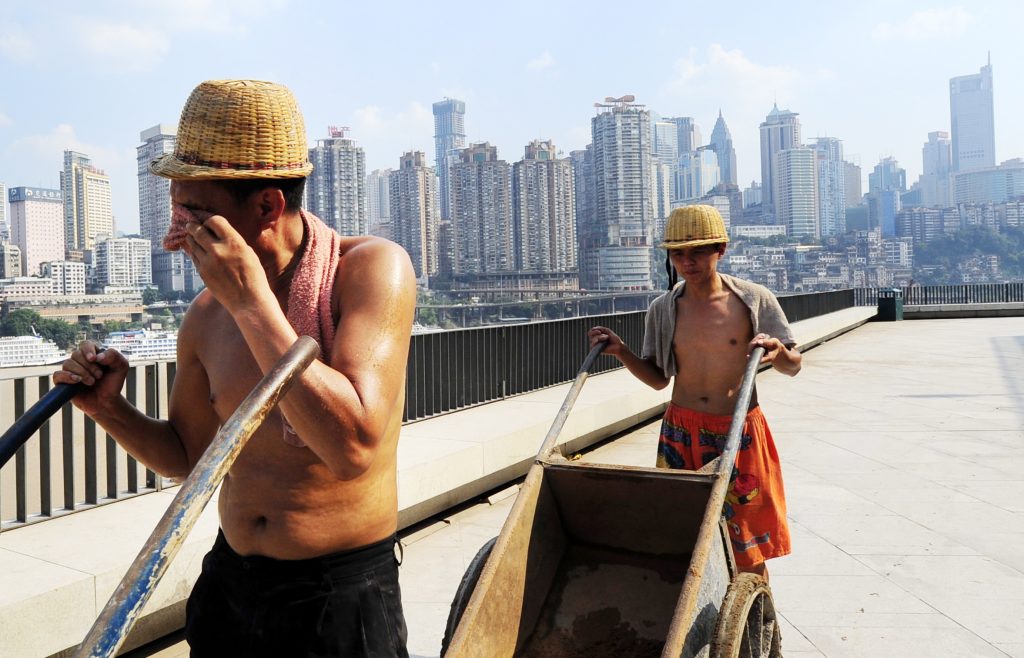The climate crisis: The economic, health, and developmental consequences of extreme heat
By Kathleen Euler Tue, Sep 19, 2023
Extreme heat impacts everything from individual health to national economies. Cities are vulnerable to this growing crisis, but there are solutions that can make them more climate resilient.
The health impacts of extreme heat
Extreme heat places a massive strain on human health and entire health care systems. During hotter weather, people become more vulnerable to dehydration, heat exhaustion, injury, and illness. Prolonged or acute exposure to high temperatures can lead to long-term health issues like kidney damage, cardiovascular diseases, miscarriages, neurological disorders, and even death.

In 2022, heat waves across Europe killed over 61,000 people. One year later, the heat waves are estimated to have caused over 70,000 excess deaths. Europe is not the only continent facing a public health crisis. A study in the state of Virginia, United States found that heat events resulted in almost 7,000 additional emergency department visits and 2,000 hospital admissions. The authors estimate that heat events could cause 235,000 emergency department visits, 56,000 hospital admissions, and $1 billion in health care costs at the national level.
The extreme heat crisis then has a ripple effect on households and entire economies. One of Arsht-Rock’s studies found that women take on a heavier share of the care burden. They become responsible for not only for their own health but also the health of their relatives and friends.
The true cost of heat
As the planet heats, nowhere is safe from the impacts of climate-driven extreme heat. While the cost of heat is undercounted and not measured nearly enough, the emerging studies show a clear, dangerous impact. By the turn of the century, heat waves could impact nearly 75 percent of the global population and cost the global economy up to 14 percent of its output—or $23 trillion—by 2050. In United States, the economy loses $100 billion each year because of heat’s impacts on worker productivity alone. That figure is set to rise to $500 billion by 2050.
Indoor and outdoor workplaces are becoming more heat exposed. This is exposing workers to a growing risk of injury or illness. The number of heat-related injuries from falls or mishandled equipment leads to an additional 20,000 annual workplace injuries in California alone. Workplace injuries are 7 percent more likely on days when temperatures are around 90°F (32°C), and 10 to 15 percent more likely when the temperature is over 100°F (37°C) compared to cooler days. This risk is also profoundly unequal. The lowest paid workers have five times as many heat-related injuries compared to the highest paid workers.
As workers become more vulnerable to heat illness, injury, and death, households and entire economies suffer. For hourly workers, missing work when it’s too hot can mean losing an entire day’s income. On the individual and household level, this can lead to financial insecurity and force many to work despite harmful temperatures.
On a larger scale, entire economies lose out when the heat rises. It can cause direct interruptions where workers must take breaks to rest and rehydrate. While working, the heat also increases the likelihood of dangerous mistakes and reduced decision-making capacity. Workplace protections and cooling solutions are critical to protect individual health and safety as well as long-term economic outcomes.
Rising heat, rising inequalities
Beyond its impact to our daily lives, extreme heat also has extreme effects on long term developmental outcomes. From its impacts on education to gender equality, the damaging consequences of heat cannot be overstated.
Students learn less and perform worse on tests as temperatures rise. Without air conditioning, annual learning drops by 1 percent for every 1 degree Fahrenheit increase. Now, as heat waves become more intense and frequent, educational outcomes could take an additional hit. In the United States, 90 Philadelphia public schools released students early from the buildings that lacked proper cooling infrastructure. In Bangladesh, there were thousands of school shutdowns due to unprecedented and longer deadly heat waves. Rising heat will have devastating and long-lasting consequences on educational outcomes. These will come with additional knock-on impacts to countries’ long-term development.

Further, extreme heat can worsen gender equality. In three heat-exposed countries, women were found to face significant losses to their income, lose more time to unpaid labor, face negative health outcomes, and take on an increased care burden in extreme heat years. Women are also less likely to survive climate disasters and face unique health risks, especially during pregnancy.
With its clear impacts on educational outcomes and gender equality, it will come as no surprise that a 2022 study found that extreme heat will likely exacerbate existing socioeconomic inequalities. By ignoring heat, countries are also ignoring their long-term development and growth—especially their economic growth.
From farm to (city) table
Extreme heat impacts more than the individual. It can impact entire supply chains and the very infrastructure in which we live and work.
A 2023 study found that climate change is intensifying the risk of major harvest failures, and consequent “price spikes, food insecurity, and even civil unrest.” Under current projections, the global rice supply is expected to decrease up to 15 percent by 2050. As the temperature rises, agricultural production will likely be impacted, causing shocks that are felt by people on the other side of the world.
Supply chains and public infrastructure aren’t safe from the heat. In the United States, Austin’s roads rippled when temperatures got so hot that the asphalt softened and buckled under heavy cars. In the United Kingdom, the London Underground turns into an oven. Temperatures can reach 35.5°C (95.9°F), which is higher than the legal limit to transport cows, sheep, and pigs (30°C).
From rural farms to urban centers, extreme heat is changing entire landscapes. Most cities, even those in warm climates were not designed for today’s temperatures, and the heat has immeasurable ripple effects that we see and feel in our daily lives — from the prices in a grocery store to the safety of our daily commutes.
Building a more resilient future
Extreme heat is not a faraway problem. Every country and every city are already beginning to feel the heat, and the temperatures will only get worse without concerted, sustainable action. As the temperatures rise, cities are facing the economic, health, developmental, and social consequences of climate change.
But there is hope for a cooler future. Local and global leaders have the unique opportunity to invest in the solutions that will protect people the impacts of climate-driven extreme heat. At Arsht-Rock, we work to develop the tools and resource that cities need to identify risks and implement local solutions.
The Heat Action Platform is one of those resources. It was developed for city officials, policymakers, financial institutions, and climate advisors. It has the knowledge and tools you need to reduce the human and economic cost of extreme heat. The Platform has a series of modules that include insights and advice on everything from designing cool roof solutions to implementing your own heat action plan.
With informed, data-driven policies and accessible, practical guides like the Heat Action Platform, we can reimagine the future of our cities. While the problem is clear and urgent, so, too, are the solutions.


